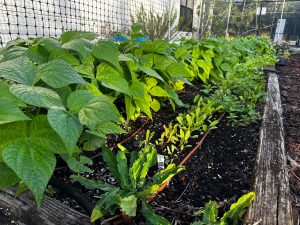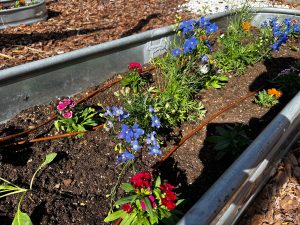As the weather get warmer, starting seeds can provide a jump on the growing season. In this article, we are going to cover a couple of tips to help you better succeed at growing seedlings for your garden. If you are just starting out, learn more about selecting seeds and preparing seed starting soil.
Timing is Everything
Certain crops grow better at certain times of year than others. Reference the Florida Edibles to Plant Infographic series and the Florida Vegetable Gardening Guide to help determine when to plant specific crops. While these resources serve as fantastic guidelines, keep in mind that adjusting to weather patterns is more important than a specific planting dates.
Plant According to Seed Requirements
For seeds that come in a packet, utilize the back of the seed packet to assist with proper spacing, depth, and light requirements. Beyond proper seed and location selection (Right Plant, Right Place) some seeds require special requirements to grow such as scarification or stratification. For seeds that do not come in a packet, use research-backed information about how to plant them.

Seed More Than You Need
Plant more seeds than needed and plan for some seeds to fail germination, get eaten, or succumb to pests. If you have extra seedlings, share with a friend or donate seedlings to your local community garden.

Consistent Even Watering
Seedlings needs consistent, even moisture. Soil that is too soggy can cause seeds to be deprived of oxygen and rot. Soil that is too dry will result in seeds that cannot germinate. Using microirrigation can help ensure consistent moisture while conserving water. To learn more about microirrigation and how to use it in the garden, Hillsborough County residents can attend an in person or online workshop.
Harden off Seedlings
Hardening off seedlings means gradually acclimatize to, or get seedlings used to, the outdoor conditions. This could be adjustments to temperature, light intensity, and other environmental factors. Transitioning seeds too abruptly from a shadier protected and ideally moist environment to a sunnier, breezy, and dryer environment can shock transplants, leading to increased disease risk, pest risk, and death. Once seedlings are about two inches tall, they can be transplanted to the garden.
The most important part is to enjoy the process of starting your garden and caring for new seedlings. As you experiment with different techniques, varieties, and timing, record your observations in a garden journal to document what you learned and make the most of the growing season year after year. Have fun and get growing!
For more information, please contact Kaleena Davis, Ornamental Horticulture Assistant at UF/IFAS Extension in Hillsborough County at kaleenadavis@ufl.edu.
 0
0
